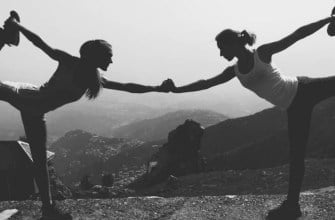 Children are the most natural and immediate beings in the world! They master various spiritual techniques and don’t think about it at all.
Children are the most natural and immediate beings in the world! They master various spiritual techniques and don’t think about it at all.
Have you seen how they look at an object that fascinates them? Intently, in the same breath? They enjoy imitating animals, are not ashamed to stand on their heads, tumble around and say the same words.
There is no need to think that meditation is something incredibly complicated and to jump to conclusions and judgments about it. Look at the world through the eyes of someone who is seeing it for the first time sees the world. Examine the features of the world around you with curiosity and attention, watch the relationships of animals, plants, and birds. Try to look at yourself from the outside and all the objects around you to remain in a pristine and unchanged form. Only then will they and your thinking become invisible, and there will be a universal unity.
During contemplation, all your senses and thought activity are focused only on a particular action or object (a picture, a person, love, happiness). Contemplation develops Consciousness and the individual himself, allows you to correctly determine his or her future path to self-realization. As a result of the practical exercises of Contemplation, one’s life problems and illnesses disappear and new new opportunities appear for the preservation and development of energy, special intuitive abilities.
What does Contemplation provide?
Contemplation gives a person everything he or she needs for full spiritual development, and as the process of contemplation grows, it changes. These changes occur quite naturally and imperceptibly, adapting to the individual practicing the practice of contemplation.
The practice of passive contemplation 
Find a comfortable position: sit down so that your back is as relaxed as possible. There should be no discomfort or tension. It is best to sit on a chair so that your feet touch the floor, but make sure that your knees form a right angle at the bend.
You can also do exercises on the floor with your legs crossed (or in the “lotus position”). The main thing is that you should be able to spend at least 30 minutes in this position without causing unpleasant, uncomfortable sensations.
The main principle of the exercise is its passivity. The mind must be freed from all problems and thought activity. In the normal waking state, the human mind is in constant activity, reacting to each stimulus and automatically processing it. The opposite of this state is sleep. In sleep, all conscious thought processes cease and one rests.
In passive Contemplation, a completely different state arises – complete passivity of the mind. This process is characterized by the absence of any thought process, reaction to various stimuli. There is no analytical work. Such a state is observed in the short interval between dozing and falling asleep. It lasts only a few seconds. This is the state that is characteristic of a person in passive Contemplation. I also recommend that you pay attention to the “Reset to Zero” reset process..
At first it is difficult to reach this state and even more difficult to maintain it. This is quite natural. Many people who begin practicing this exercise even fall asleep, especially if they are also in a supine position. But gradually, by constantly practicing and gaining invaluable experience in this technique, Contemplation lends itself to mastery and the first positive results become noticeable.
 Try to relax as much as possible and switch to positive emotions before starting the practice. Leave all problems behind. Close your eyes and do not think about anything. Just take your mind off your thoughts and worries.
Try to relax as much as possible and switch to positive emotions before starting the practice. Leave all problems behind. Close your eyes and do not think about anything. Just take your mind off your thoughts and worries.
The most important thing in training is not to give in to the urge to go after your own thoughts, develop them and create new ones.
Remain unconcerned with all the thoughts that arise that can disrupt the practice and the entire meditation process. Do not react to constantly arising irritants.
Become, for a time, an ordinary observer of your own life and thoughts, showing no interest in them at all. It’s as if you’re just watching the placid, measured flow of a river in windless weather: it’s flowing by itself, and you’re just looking at it, not observing or following any particular object. You know it is flowing, but you are totally indifferent to it.
Gradually, by practicing regular practice, you you will learn to achieve this “thoughtlessness”. And you’ll feel how beautiful it is when you can put thoughts aside and enjoy a state of meditation during which there are no anxieties and worries and unfounded illusions. There is only the feeling of happiness and spirituality.
With love Maria Shakti 






